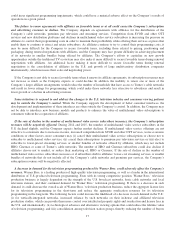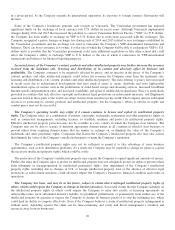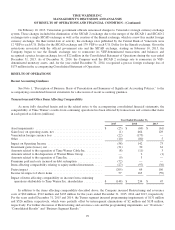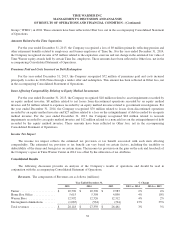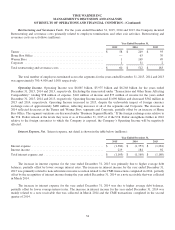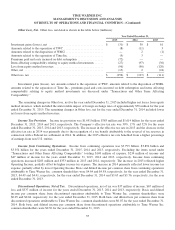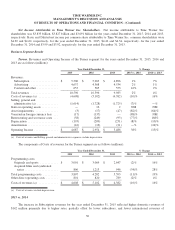Time Magazine 2015 Annual Report Download - page 40
Download and view the complete annual report
Please find page 40 of the 2015 Time Magazine annual report below. You can navigate through the pages in the report by either clicking on the pages listed below, or by using the keyword search tool below to find specific information within the annual report.TIME WARNER INC.
MANAGEMENT’S DISCUSSION AND ANALYSIS
OF RESULTS OF OPERATIONS AND FINANCIAL CONDITION - (Continued)
formats; changing retailer initiatives and strategies (e.g., reduction of floor space devoted to home entertainment product in
physical formats); retail store closures; increasing competition for consumer discretionary time and spending; and piracy.
The electronic delivery of film and television content is growing and becoming more important to the Warner Bros. segment,
which has helped to offset some of the decline in sales of home entertainment product in physical formats. During 2015,
across the home entertainment industry, consumer spending on home entertainment product in physical formats continued to
decline and consumer spending on electronic delivery continued to increase.
Television Industry
The television industry is continuing to evolve, with changes in technology, rapid growth in new video services, and a
corresponding increase in overall video content consumption and shift in consumer viewing patterns. Consumers are
watching an increasing amount of programming on-demand and across a wide variety of services and devices, including
smartphones, tablets, PCs and internet-connected televisions. During 2014 and 2015, the number of multichannel video
service subscribers in the U.S. declined slightly, and the Company expects further modest declines. To counteract this trend,
some multichannel video service providers (“MVPDs”) are putting greater emphasis on selling smaller bundles of cable
networks, resulting in higher subscriber declines for most individual networks than for multichannel video services in total.
At the same time, the penetration of broadband and internet-connected devices has grown and SVOD services such as
Amazon Prime, Hulu and Netflix have continued to increase their number of subscribers. These SVOD services have been,
and are expected to continue, making significant investments in acquired and original programming. In addition, ad-
supported broadband video services such as those offered through YouTube and Facebook have continued to gain in
popularity. Some television networks have launched SVOD and other OTT services that are available to consumers without a
multichannel video service subscription.
As a result of these changes, consumers have more options for obtaining video content, including lower-cost
alternatives. At the same time, however, the combination of new competitors, changes in viewing habits and declines in
MVPD subscribers has negatively affected overall television ratings and, as a result, television advertising revenues for the
industry and certain of the Company’s networks. There also has been a corresponding shift of advertising dollars to non-
traditional video outlets.
To address these changes, the Company’s strategy over the past few years has focused on strengthening its position
within the traditional TV ecosystem, enhancing the value of traditional pay television subscriptions for consumers, and
pursuing new opportunities outside the traditional TV ecosystem. As part of this strategy, the Company plans to continue
increasing its investment in high-quality distinctive programming to enhance the value of its networks. The Company is also
working to enhance the value to consumers of the traditional MVPD bundle and capitalize on the shift in consumption habits
in a number of ways, including by expanding the amount of its content that is available on demand and supporting the
development of better user interfaces for on-demand multiplatform viewing. The Company is also pursuing a number of
initiatives to capitalize on the new opportunities presented by these changes, including launching and investing in SVOD and
other OTT services, as well as investing in short-form content production and digital-first news and entertainment networks.
In addition, Turner has introduced new advertising products that provide greater data analytic tools and targeting capabilities
to advertisers in order to more effectively compete with non-traditional outlets.
Recent Developments
Central European Media Enterprises Ltd.
2016 Transactions
On February 19, 2016, CME Media Enterprises B.V. (“CME BV”), a subsidiary of Central European Media
Enterprises Ltd. (“CME”), entered into a credit agreement (the “2016 Credit Agreement”) with third-party financial
institutions for an approximate €470 million senior unsecured term loan (the “2016 Term Loan”) that will be funded in April
26



